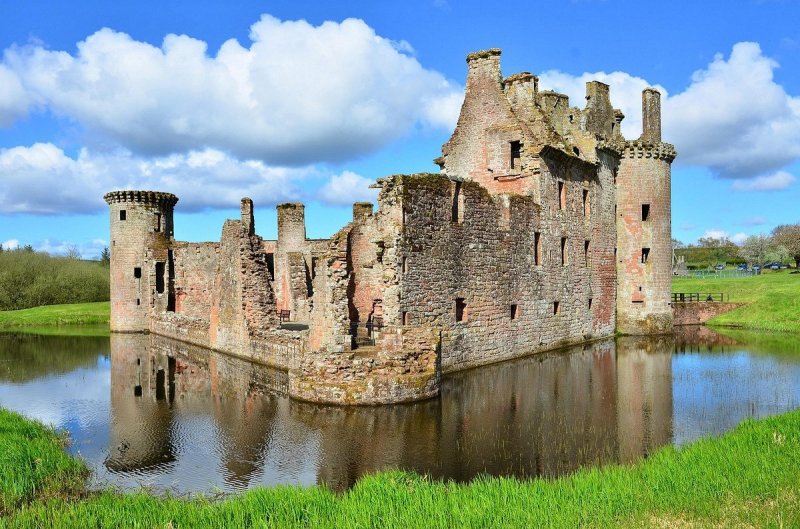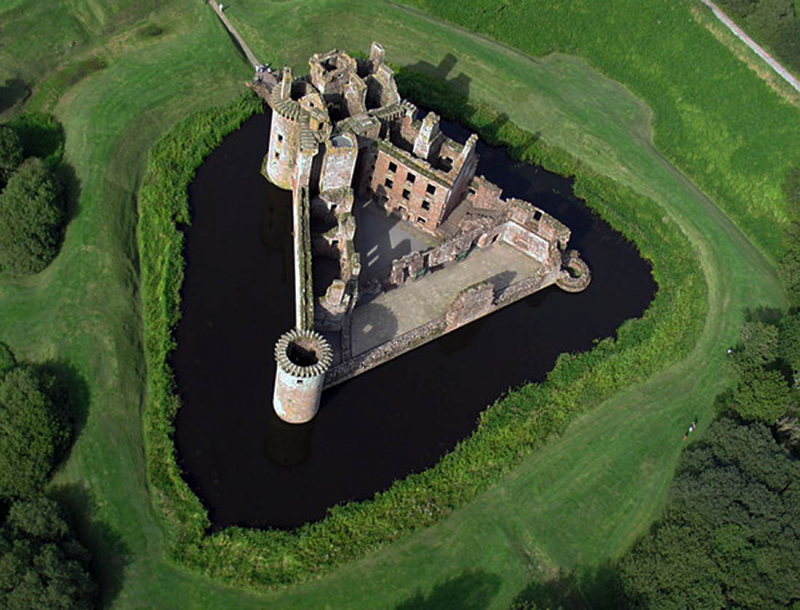Caerlaverock Castle
Originally constructed in the 13th century, Caerlaverock Castle is a moated triangular structure. It is situated on the edge of the Caerlaverock National Nature Reserve on the southern coast of Scotland, eleven kilometers (seven miles) south of Dumfries. From the 13th century until the castle's abandonment in the 17th century, Caerlaverock served as the Maxwell family's bastion.
Throughout the Wars of Scottish Independence, it was besieged by the English and partially destroyed and rebuilt multiple times. This occurred in the 14th and 15th centuries. When the Maxwells were made Earls of Nithsdale in the 17th century, they added a new residence inside the walls that has been dubbed "the most ambitious early classical domestic architecture in Scotland." The last time the castle was besieged was in 1640, after which it was left in ruins. The castle has been destroyed and rebuilt numerous times, yet it still has the recognizable triangle layout that was created in the 13th century. Early on, Caerlaverock Castle was constructed to regulate trade.
Caerlaverock Castle is a recognized landmark in the Nith Estuary National Picturesque Area, which is preserved for its scenic beauty. The 55 square kilometer Caerlaverock National Nature Reserve, which is made up of salt marsh, mudflats, and grazing area, has the castle at its northernmost point. For wading species, such as the barnacle goose, and ducks, it is a crucial wintering location.
Location: Castle Road End, Dumfries DG1 4RU, Scotland













